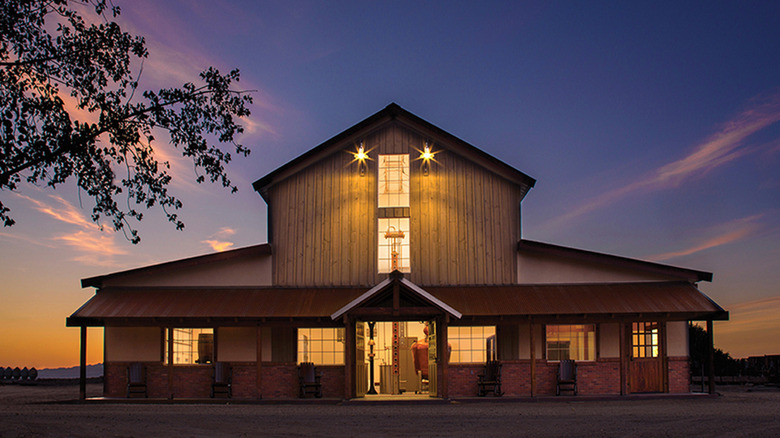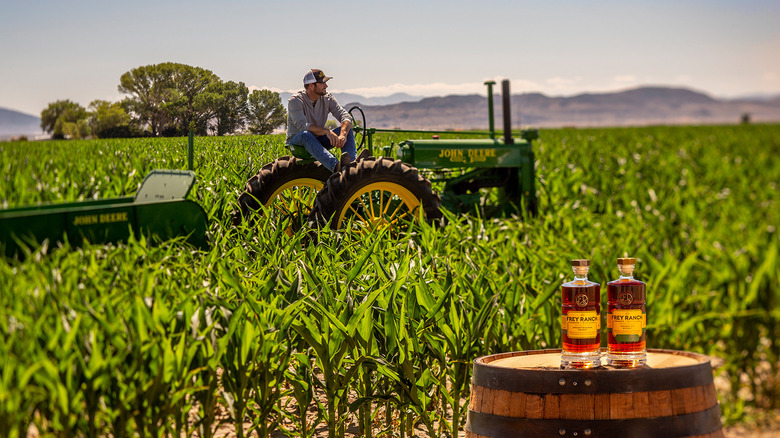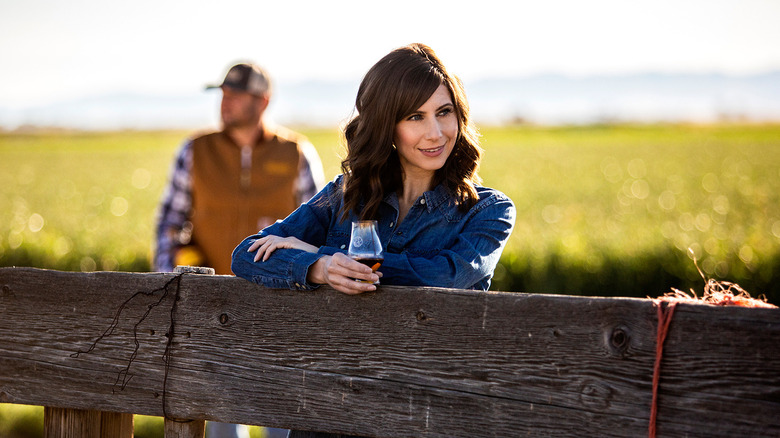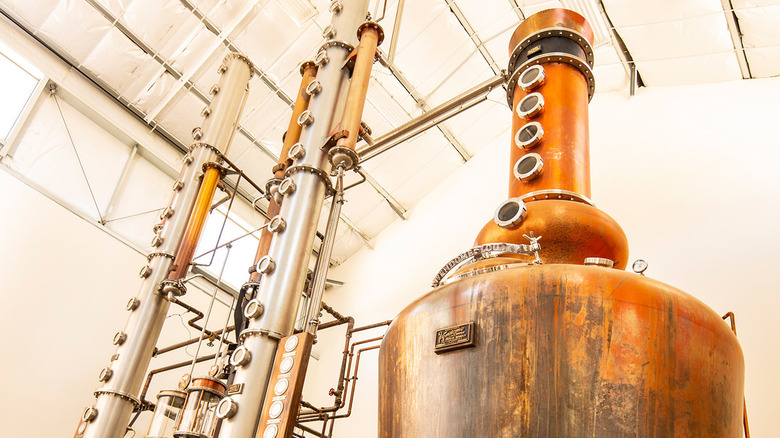The Nevada Farm Whiskey Lovers Need To Visit
Sponsored Content. The sponsor may receive a commission on purchases made from links.
Frey Ranch Distillery is rousing itself from winter. Situated on the Frey family's multigenerational farmland in Fallon, Nevada, the stillhouse overlooks the fields where the grain used in its whiskey grows. The winter crops for this 100% farm-to-glass American whiskey are flourishing, and it's now planting time for summer grains. As farmer and distillery co-founder Colby Frey leads a virtual tour, he points out "that beautiful green rye field" in the distance. Soon that rye will be harvested and taken on a short trip here to the cadre of buildings where the whiskey gets made and aged, and where Frey himself enjoys a short commute to his front door.
And that's what makes the Frey Ranch Distillery an authentic Farm-To-Glass operation — something visitors can truly toast to as they enjoy one of Frey's six Farm-To-Glass signature cocktails. The Farmer's Lemonade, Blackberry Smash, Sun Dog Citrus Collins, Porch Swing, Warden 1854, and Above the Frey are all house takes on beloved mixology that will have consumers of all tastes singing whiskey's praises. The best part: If a trip to the ranch is not in the cards for you, Frey Ranch Distillery shares its recipes online, meaning you can purchase a bottle, add some fresh produce, juices, or herbs from your local farmers market, and bring the Farm-To-Glass experience to your home to enjoy with friends and family.
Everything at Frey Ranch Distillery happens onsite
While plenty of distilleries source grain locally, Frey Ranch Distillery is pretty special in doing it the way whiskey was originally made — at the farms that grew the grains. The distillery uses corn, wheat, rye, and barley – the big four of American whiskey mash bills, and even malts its own barley (often the other grains, too, which is less common). This all adds up to a true Farm-To-Glass experience. It's the kind of sustainability and transparency that plenty of companies promote but few truly deliver.
Knowing where every ingredient comes from is important to farmer and founder Colby Frey. Buying externally, says Frey, leaves distilleries in the dark on a lot of aspects that go into their whiskeys. "You don't know how they were grown and what pesticides are put on it, what the total details of exactly what was done to it," he notes. "You just get what you get." Frey believes the best way to know the composition and life story of the crop is to grow it yourself.
From the water that irrigates the fields and cools the still, to the cows that feed on the spent grains and supply the fertilizer, Frey Ranch thrives on its hyper-local philosophy. The end result is a gorgeous whiskey that tastes amazing while offering consumers the warm and fuzzy feeling of knowing exactly where everything in their glass originated.
Nevada's oasis is just right for making whiskey
The Frey family has farmed land around The Oasis of Nevada since 1854, which is older than Nevada itself has been a U.S. state (becoming one on Halloween, 1864, for the record). His grandfather purchased this particular ranch in 1944 after selling his old land to his brother for a dollar.
When your farming roots go back to one of Nevada's eight original deeded properties, you know the importance of taking custody of the land to see it flourish for future generations. To that end, Frey Ranch Distillery prioritizes low-energy consumption and ecological grow methods. Frey calls his operation "one of the most naturally sustainable distilleries in the world."
That's why the bottom of every bottle reads, "Be good to the land, and it will be good to you." It's apparent that Frey takes this to heart, saying he doesn't even like to talk about it, for fear of using what's right as a marketing slogan. "It's who we are, it's what we should do, and I just hate the boxes that everybody paints you into," he says. "But if everybody is that way, then the world would be such a better place."
Farm-to-glass isn't a buzz word around here. Frey speaks passionately about his responsibility to give the land to the next generation better than he received it, a process which includes a seven-year crop rotation to maintain the land's biome. And if that's not worth a toast, what is?
Frey Ranch is open to the public
It's easy enough to get ahold of Frey Ranch whiskey – bottles are available at retailers across the U.S. and they can even be purchased through the distillery's online whiskey shop and shipped directly to your door. But to truly get a sense of what the Farm-to-Glass ethos is all about, a trip to Fallon is in order.
Frey Ranch opens its doors every Saturday from noon to 4pm for complimentary tours and tastings. Beyond soaking in the majestic beauty of the farm, whiskey lovers will geek out on the Vendome copper & brass pot still at Frey Ranch. (Without spoiling the punchline for you, a visit to the distillery comes with a guaranteed laugh as founder Colby Frey tells the tale of assembling it himself to save $35,000 on an in-house professional install. "We're farmers, we'll figure it out," he told his supplier, a promise he managed to keep.) Just remember to leave plenty of room in your luggage because you're bound to be taking home a few souvenirs.




